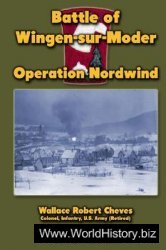Meanwhile, the British evacuation of Palestine was proceeding according to plan. The British withdrew from successive areas in the country without being able to transfer administrative authority to anybody, leaving a vacuum and, in many areas, utterly chaotic conditions. The police force had ceased to exist; postal services had broken down (and Palestine was no longer a member of the International Postal Union). By Friday 14 May, only a small British garrison was left in Jerusalem protecting the High Commissioner, in addition to an enclave retained in Haifa. On that day, the British garrison evacuated Jerusalem, and the High Commissioner, General Sir Alan Cunningham, flew from Kalandia Airport (now Atarot) outside Jerusalem to Haifa, whence he sailed on a Royal Navy vessel. Palestine was now free of British troops and British authority, with the exception of a small enclave at Haifa port, which remained for some weeks in order to complete the final British withdrawal.
The United Nations Palestine Commission, which had been appointed to implement the Partition Resolution, had sent an advance party under Dr. Pablo Azcarate (formerly Republican Spanish Ambassador to Great Britain). The Commission reported that the refusal of the Mandate Government to co-operate with it in the orderly transfer of power under the Partition Resolution had brought Palestine into a state of complete chaos. Desperate political moves were initiated in the United Nations to avert what was seen as an impending disaster and bloodbath, including a trusteeship proposal put forward by the United States of America. A Consular Truce Commission was appointed in which the United States, France and Belgium were members. Its efforts, however, were to be of little avail. Unsuccessful appeals were made to the British to postpone their departure, and events in Palestine moved forward inexorably to their inevitable conclusion.
Meanwhile, the Jewish leadership was debating whether or not to declare independence on 14 May, the date of the British withdrawal. Pressures were exerted on the Jewish representatives in Washington and elsewhere to postpone what might be a precipitate action and thus avoid forcing the Arab armies to go to war. But David Ben-Gurion, head of what was known then as the ‘People’s Directorate’ (later to become the provisional government of Israel), decided that the historic opportunity that had been created must be seized, and his view prevailed against opposition in the Directorate. On Friday 14 May, David Ben-Gurion convened the Provisional Council (later to become the Knesset or Parliament) in the Municipal Museum of Tel Aviv on Rothschild Boulevard (Jerusalem, of course, being under siege and completely cut off). He declared the establishment of a Jewish state in Palestine to be known as the State of Israel. Early the next morning, he broadcast to the United States of America; as he spoke, the sound of Egyptian aircraft bombing Tel Aviv could clearly be heard.
No parallel development occurred on the Arab side. Having rejected the idea of an Arab state in part of Palestine, they Joined together to destroy
The embryonic State of Israel. A few days before the final British evacuation, Golda Myerson (later Mrs. Golda Meir), a member of the Executive of the Jewish Agency for Palestine (and a prominent leader of the Labour Party) had been sent by Ben-Gurion to meet King Abdullah. She was accompanied by Mr. Ezra Danin, whose task at that time was to maintain contact between the Jewish Agency and various Arab leaders, including the King. Disguised as an Arab woman, Mrs. Myerson had crossed into Jordan in the area of the power station at Naharayim at the confluence of the Jordan and Yarmuk rivers. At her secret meeting with King Abdullah, she had endeavoured to dissuade him from joining the invasion and to set the basis for future Jordanian-Israeli co-operation, but the King was by now committed. She returned to Tel Aviv to report the failure of her mission and the inevitability of an invasion. On the night of 14/15 May, the armies of five Arab states (Egypt, Jordan, Syria, Lebanon and Iraq) crossed the borders and began the invasion of Palestine.
The Jewish forces had now linked-up in most parts of the country to create a measure of territorial depth, but there were two particularly vulnerable elements in Israel’s defence posture. One was Jerusalem, which was now being pounded by Arab Legion artillery and fighting as a desperate, beleaguered garrison, with food and supplies already at a minimum. The other problem area was the Negev, in the south, where the Jewish settlements were under siege.
In the first week of May, following the urging of the Political Committee of the Arab League (which decided to invade Palestine immediately on termination of the Mandate on 15 May), the Chiefs of Staff of the Arab armies met in Damascus and approved an invasion plan. King Abdullah of Jordan was Commander-in-Chief of the Arab armies, but this appointment was no more than a title on paper: in practice, each army intended to act in its own national interest and to take orders from its own General Staff rather than from the overall commander. Indeed, the plan evolved not so much as a co-ordinated attack as a division of Palestine into areas to be occupied by the respective Arab armies. The Lebanese were to strike along the northern coast towards Nahariya. The Syrians would cross to the north and south of the Sea of Galilee and head for Zemach, with the occupation of Galilee as their objective. The Iraqis would cross the Jordan south of the Sea of Galilee and, moving through the Arab ‘triangle’, advance to Netanya on the Mediterranean coast and cut the Jewish state in half. The objective of the Jordanian Arab Legion was the seizure of Nablus and the district of Samaria by one brigade, while the second brigade would seize Ramie on the approaches to Tel Aviv in the central coastal plain; the third brigade was to remain in reserve. The Egyptians would advance in two columns: the main body, from El-Arish, would march along the coastal plain and seize Gaza and then advance northwards to Tel Aviv; the other, reinforced by the Moslem Brotherhood volunteers, would strike towards the north-east through Auja, Beersheba and Hebron, to engage the Jewish forces defending the southern approaches to Jerusalem. In addition, Kaukji’s Arab Liberation Army, numbering some 10,000 troops backed by 50,000 Palestinian Arab
Irregulars, would be available for local defence. All these Arab forces were equipped with modern weapons; three of them, Egypt, Iraq and Syria, had air force support; two, Egypt and Syria, were equipped with tanks; Jordan, Lebanon and Iraq had armoured car contingents. All five armies had a modern artillery component and all had been trained by European instructors (primarily British and French) as modern forces. Kaukji’s had an artillery and armoured car element, while the Egyptian Army included units of the Saudi Arabian Army.
Facing this multi-pronged Arab attack advancing on all the major routes into Israel were the infant Israel Defence Forces — more like a partisan force, with a hodge-podge of various types of non-standard equipment, with a wide range of small-arms, with a primitive communication system, with practically no artillery, armour or heavy equipment, and with but an embryonic air unit of light liaison aeroplanes. However, the Arab armies did not have an effective central command: coordination between them was loose and, at times, ineffective. The Israeli forces had the advantage of operating along internal lines and were, as the fighting continued, gradually being fashioned into a co-ordinated fighting force that could move reserves from front to front. Above all, the Israelis were consciously and literally fighting for their lives and those of their women and children, and enjoyed outstanding and committed leadership.
The Israeli forces now consisted of nine operational brigades, deployed as follows: three Palmach brigades, the ‘Yiftach’ in eastern Galilee, the ‘Harel’ in the Jerusalem Corridor and the ‘Negev’ in the south. The ‘Golani’ Brigade was in southern Galilee, the ‘Carmeli’ in western Galilee, the ‘Alexandroni’ along the coast between Haifa and Tel Aviv, the ‘Kiryati’ north and north-east of Tel Aviv, and the ‘Givati’ to the south. Jerusalem was held by the ‘Etzioni’ Brigade. In the course of formation was the 7th Brigade under Colonel Shlomo Shamir, at the western end of the Jerusalem Corridor. Yitzhak Sadeh was creating an 8th Armoured Brigade and, in the north, the ‘Oded’ or 9th Brigade was being formed. Approximately 40,000 Jewish troops thus organized faced the Arab invaders. Apart from the large variety of small-arms, the heaviest equipment of any consequence in the Israeli forces was the 3-inch mortar, of which there were 195, while the ‘artillery’ units had acquired some Hispano-Suiza 20mm guns and some French 65mm howitzers without sights dating from the beginning of the century. A few Messerschmitt aircraft had been acquired, but were still abroad. Armoured units included some scout cars and a number of crudely home-made armoured vehicles. The battle for the existence of Israel was about to begin.




 World History
World History









